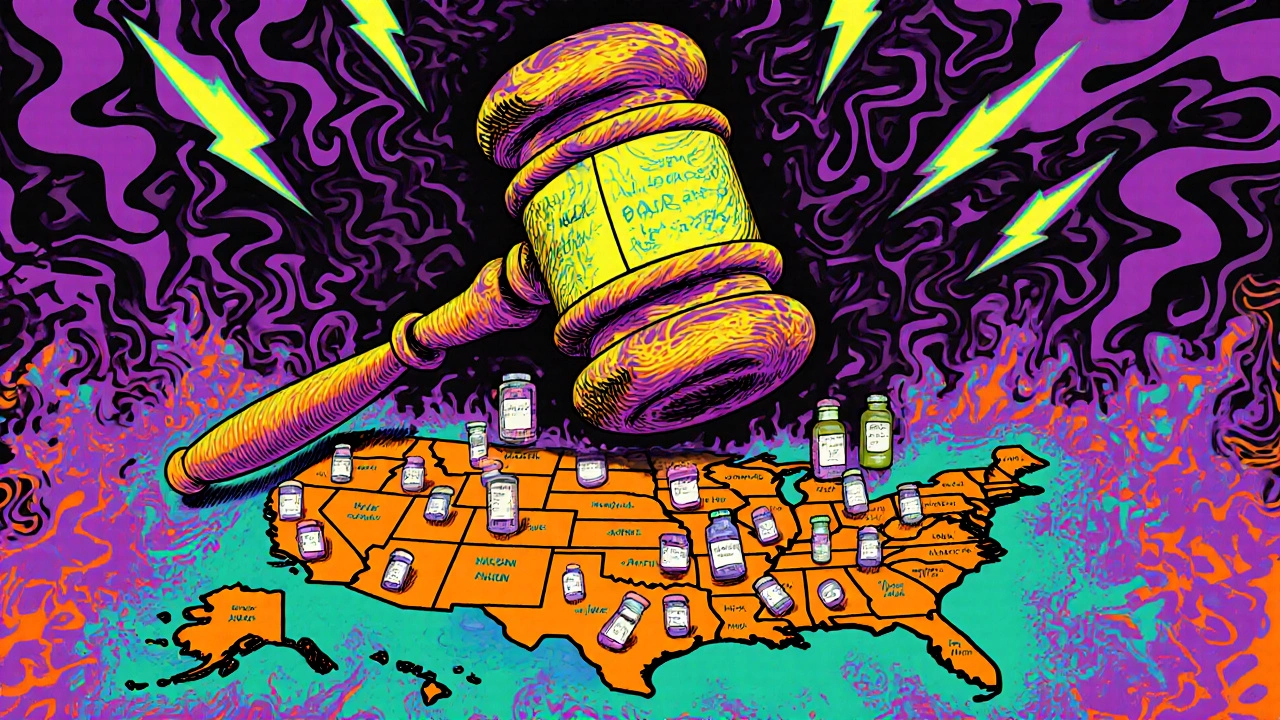
The Federal Circuit Court doesn’t just hear patent cases-it shapes the entire U.S. pharmaceutical market. Unlike other federal appeals courts that handle a mix of criminal, civil, and administrative cases, the Federal Circuit has one job: patent law. And when it comes to drugs, its decisions decide whether a generic version hits shelves-or gets stuck in court for years.
Why the Federal Circuit Controls Pharmaceutical Patents
In 1982, Congress created the U.S. Court of Appeals for the Federal Circuit to fix a broken system. Before that, patent cases were scattered across 12 regional circuits. A drug patent might be upheld in Texas but thrown out in California. Companies couldn’t plan. Investors couldn’t bet. The result? Chaos. The Federal Circuit changed that. By law, all patent appeals go to this one court. That includes every lawsuit over a new cancer drug, a cholesterol pill, or a generic version of a best-selling antidepressant. No exceptions. No regional bias. Just one set of rules. This matters because pharmaceutical patents are complex. They’re not just about the chemical formula. They’re about how much to take, when to take it, and how long the effect lasts. The Federal Circuit has spent decades building a specialized understanding of these nuances-something no other court has.The ANDA Filing That Changed Everything
In 2016, the court made a decision that sent shockwaves through the industry. Mylan, a generic drugmaker, filed an Abbreviated New Drug Application (ANDA) with the FDA to sell a generic version of a branded drug. The patent holder sued in Delaware, even though Mylan had no offices or employees there. The Federal Circuit ruled: Yes, that’s enough. Filing an ANDA means you intend to sell the drug nationwide. That single act creates personal jurisdiction in any state-including Delaware, a favorite for patent holders because of its experienced judges and fast-track dockets. Since then, 68% of ANDA lawsuits are filed in Delaware. That’s up from 42% in the decade before. Generic companies now face lawsuits in places where they’ve never even shipped a pill. The cost? Average litigation jumped from $5.2 million to $8.7 million per case between 2016 and 2023. It’s not just about money. It’s about timing. The 30-month stay on generic approval? Now it’s almost always used up. Companies wait years before they can even start selling, even if their drug doesn’t infringe.Orange Book Listings: The Hidden Gatekeeper
The FDA’s Orange Book isn’t just a directory. It’s the control panel for generic drug entry. It lists every patent tied to a branded drug. If a patent isn’t listed, a generic can launch without fear of a lawsuit. In December 2024, the Federal Circuit ruled in Teva v. Amneal that only patents that actually claim the drug can be listed. If a patent covers a method of use, but not the drug itself, it can’t block generics. This cleared up years of confusion. Brand companies had been listing patents that didn’t directly relate to the drug-just to delay competition. Now, companies must do “patent-drug claim mapping.” Legal teams spend weeks checking every word of every patent against the FDA’s drug description. This added 17 business days to pre-listing reviews, according to a 2024 survey of top pharmaceutical firms. It’s a win for generics. But it’s also a wake-up call for brand companies: your patent portfolio must be tight. No more padding.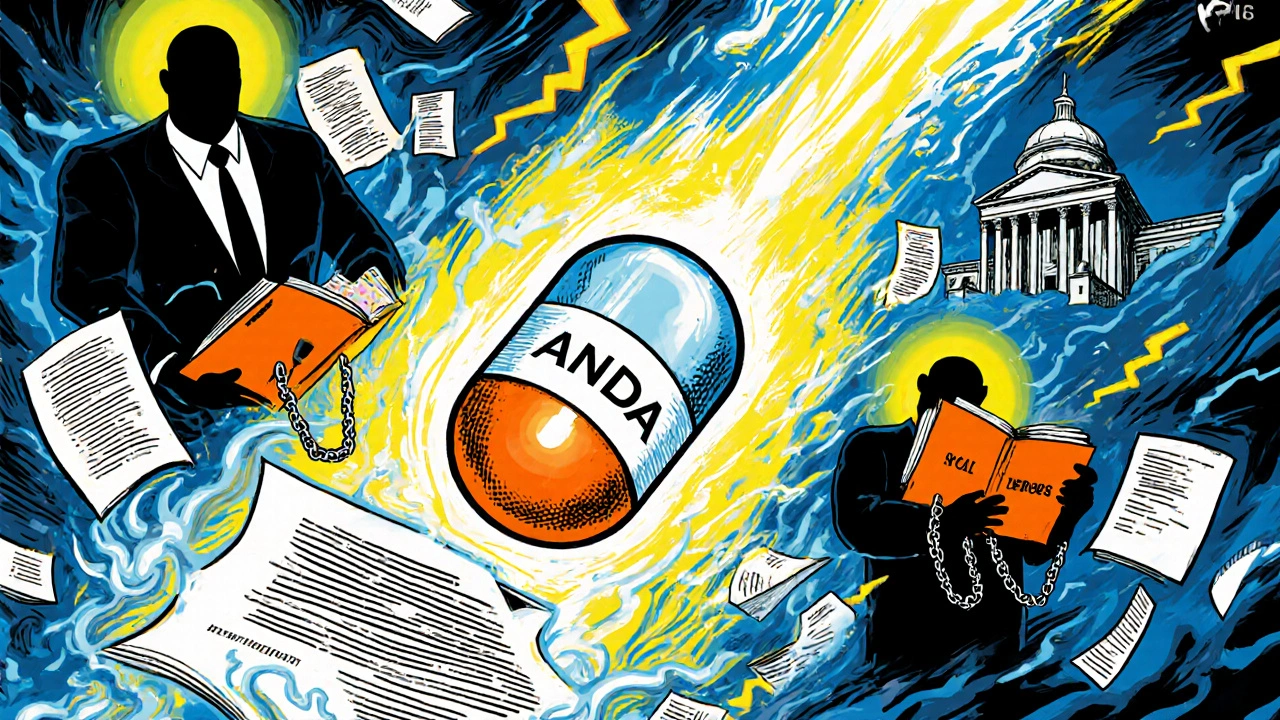
Dosing Patents: The High Bar for Incremental Innovation
One of the biggest battlegrounds in pharma patent law is dosing. Can you patent a new way to take a drug? Like taking it once a day instead of three times? Or reducing the dose to cut side effects? For years, companies piled on these “secondary” patents-extending exclusivity by a few years. But in April 2025, the Federal Circuit slammed the door in ImmunoGen v. Sarepta. The court said: if the drug itself is old, and the only new thing is the dose, it’s probably obvious. Judge Lourie put it plainly: “Because both sides admitted that the use of IMGN853 to treat cancer was known in the prior art, the only question to resolve was whether the dosing limitation itself was obvious.” That ruling changed everything. Pharmaceutical companies saw a 37% drop in secondary dosing patent filings after April 2025. Instead, they’re spending more on entirely new compounds. Investment in novel drug discovery rose 22%. The standard is clear now: minor tweaks aren’t enough. You need a surprise. A dramatic improvement in safety. A totally unexpected benefit. Otherwise, your patent won’t survive.Standing: Can You Challenge a Patent Before You Even Start?
Here’s the catch: you can’t just walk into court and say, “I think this patent is invalid.” You need standing. You have to show you’re actually planning to make the drug. In May 2025, the court ruled in Incyte v. Sun Pharma that vague intentions aren’t enough. You need documents: Phase I trial protocols, manufacturing plans, supplier contracts. The court wants proof you’re not just fishing for a legal win-you’re building a real product. This has created a new hurdle for generic companies. Many delay legal challenges until they’re deep into development. But that means they risk wasting millions on a drug that might be blocked later. Judge Hughes flagged the problem in his concurrence: “A party seeking to develop a drug that may infringe an existing patent has a significant interest in trying to invalidate that patent before making the large financial and time investments such development efforts demand.” His words are being heard. Senators Thom Tillis and Chris Coons introduced the Patent Quality Act of 2025 to lower the standing bar for generic drug challengers. If it passes, it could reshape how companies approach patent disputes.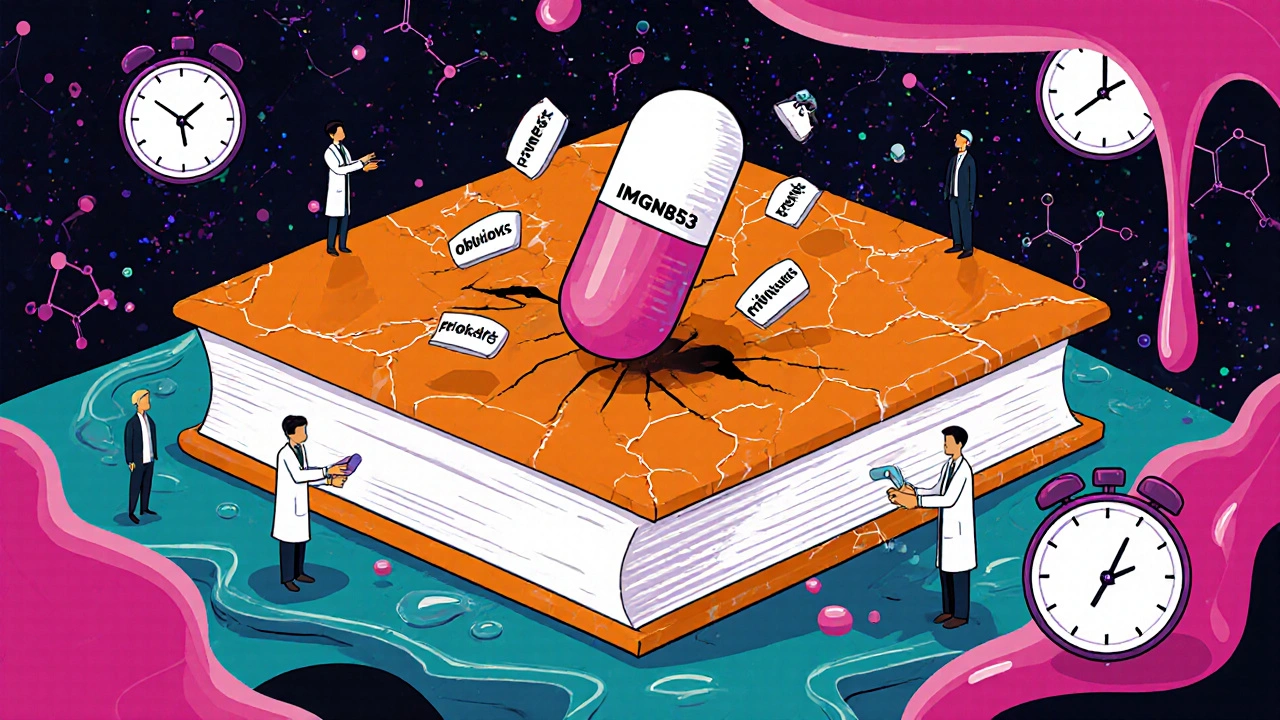
Why This Court Matters More Than Any Other
The Federal Circuit isn’t just another appeals court. It’s the only one that hears every patent case in the country. That means its rulings set the standard for the entire industry. Compare it to the European Patent Office. In Europe, novel dosing regimens often get patents. In the U.S., under the Federal Circuit’s current rules, they rarely do. That’s why many pharmaceutical companies file their most valuable patents in Europe first-and delay U.S. filings until they’ve built stronger data. The court’s rulings affect everything: drug prices, patient access, R&D spending, and even global competition. When the Federal Circuit says a patent is invalid, generic drugs flood the market. When it upholds a patent, patients wait. And it’s not just about big pharma. Small biotechs rely on these decisions too. A single patent ruling can make or break a startup.What’s Next?
The court is still evolving. In February 2025, it ruled that the Patent Trial and Appeal Board can still review expired patents for validity-even if damages are off the table. That keeps the door open for legal challenges long after a drug hits the market. Industry analysts predict a 15-20% drop in “evergreening” strategies by 2027. That means fewer patents on minor tweaks. More innovation on real breakthroughs. But the tension remains. Generic companies say the court makes it too hard to challenge patents. Brand companies say the court is too quick to kill valid protections. One thing’s clear: if you’re in pharmaceuticals, you don’t just need a science degree. You need to understand the Federal Circuit.Why does the Federal Circuit have exclusive authority over pharmaceutical patent cases?
The Federal Circuit was created by Congress in 1982 to centralize patent appeals. Before that, different circuit courts had conflicting rulings, making it impossible for companies to predict outcomes. Now, every patent case-from a new cancer drug to a generic version of a blood pressure pill-goes to this one court. This ensures consistency in how patent law is applied across the entire U.S. pharmaceutical industry.
What is an ANDA, and why does filing one trigger nationwide jurisdiction?
An ANDA, or Abbreviated New Drug Application, is the form generic drugmakers submit to the FDA to get approval to sell a copy of a brand-name drug. When a company files an ANDA, it’s legally declaring its intent to sell that drug across all 50 states. The Federal Circuit ruled in 2016 that this single act creates personal jurisdiction anywhere in the U.S.-even if the company has no offices or sales there. This lets patent holders sue in favorable courts like Delaware, increasing litigation costs and delays for generics.
How does the Federal Circuit decide if a dosing regimen is patentable?
The court now requires more than just a new dose schedule. In its April 2025 ruling in ImmunoGen v. Sarepta, it said that if the drug itself is already known in the prior art, changing the dose or frequency isn’t enough to make it patentable. To qualify, the applicant must show something unexpected-like a dramatic drop in side effects or a significant boost in effectiveness. Minor adjustments alone won’t cut it. This has led to a 37% drop in secondary dosing patent filings since the decision.
What’s the Orange Book, and why does it matter for generic drugs?
The Orange Book is the FDA’s official list of patents tied to brand-name drugs. If a patent is listed there, generic makers must either wait until it expires or prove it’s invalid. In December 2024, the Federal Circuit ruled that only patents that actually claim the drug’s chemical structure or approved use can be listed. Patents covering unrelated methods or formulations must be removed. This prevents companies from “evergreening” by listing weak patents to block competition.
Can a company challenge a patent before developing a drug?
Not easily. The Federal Circuit requires “Article III standing,” meaning the challenger must show concrete plans to make the drug-not just a desire to invalidate the patent. That means having signed supplier contracts, clinical trial protocols, or manufacturing plans. In 2025, the court ruled in Incyte v. Sun Pharma that vague intentions aren’t enough. This has forced generic companies to delay legal challenges until later in development, increasing financial risk.

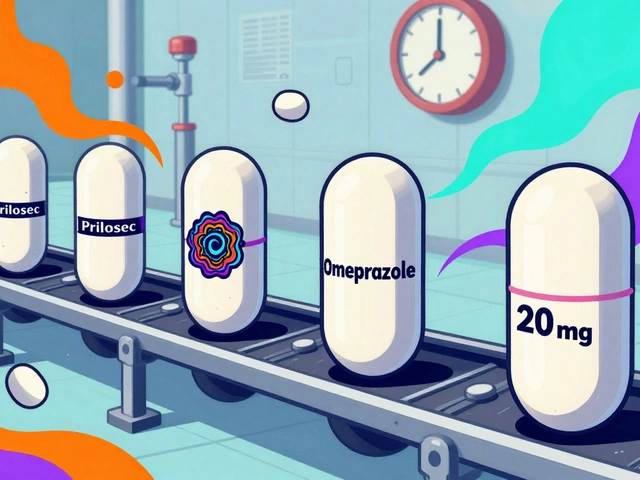
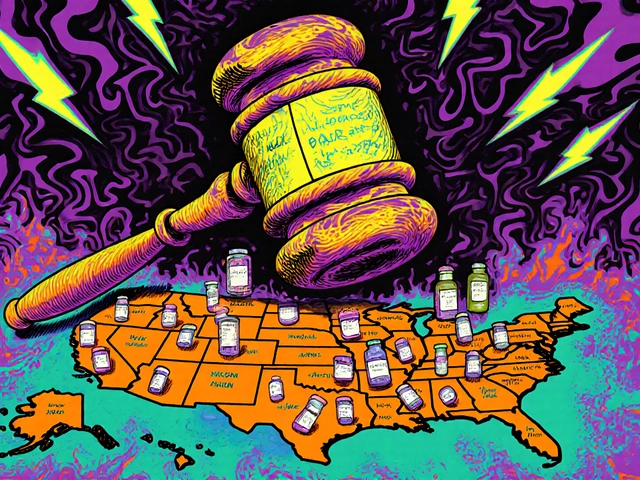
This court is the real gatekeeper of drug prices. No wonder generics take forever to launch.
The ANDA jurisdiction ruling is a game-changer for patent litigation strategy. Delaware's docket is now the epicenter of pharma IP.
I love how the Federal Circuit is finally cracking down on dosing patents. It's about time we stop rewarding tiny tweaks as innovation.
The whole system is rigged. Big Pharma owns the court. You think this is about law? Nah. It's about $$$ and lobbyists. 🤑
The Orange Book ruling is huge. I've seen companies list every patent they can think of just to delay generics. This clears the fog.
The standing requirement in Incyte v Sun Pharma is necessary to prevent abusive declaratory judgment tactics. Courts must ensure real controversy exists before engaging in patent invalidation
It's funny how we treat patents like sacred texts. In reality, they're legal tools. The Federal Circuit is just enforcing a balance between incentive and access. But who decides what's 'obvious'? That's the real question.
I've worked with small biotechs who live in fear of these rulings. One decision can kill a company or save a thousand patients. This isn't just law-it's life and death.
I can't believe how much power one court has over something as basic as medicine access. This isn't justice-it's a monopoly. And we're all paying for it.
This is so important but no one talks about it. The drop in dosing patents means more real innovation. I'm so hype for the next wave of breakthrough drugs!
They say the court is neutral but you know who funds the judges' retirement? Big Pharma. This whole thing is a front. The ANDA ruling? Designed to bankrupt small generics.
Ugh. Another post about lawyers deciding who gets medicine. Can we just make drugs free already? Why does anyone care about patents when people are dying?
This court is just letting foreigners destroy American innovation. Why are we letting Indians and Canadians tell us how to protect our own drugs? America first!
DENIS GOLD you're not helping. This isn't about countries. It's about law.